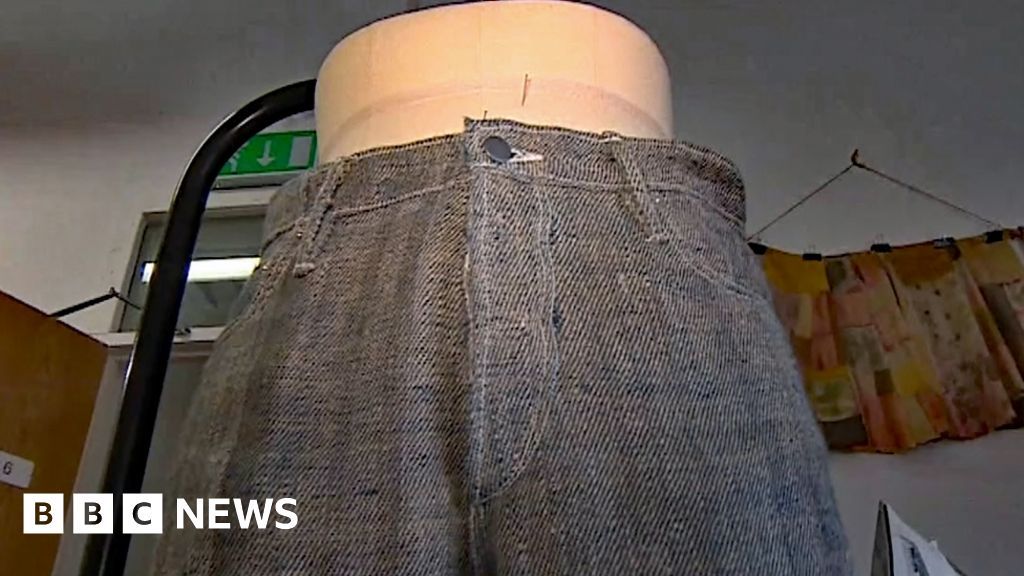
A textiles designer who has created a sustainable alternative to jeans by growing and weaving her own material has said making the trousers has been a gruelling “rollercoaster”.
Justine Aldersey-Williams grew flax on her allotment in Hoylake, Merseyside and spent months learning to spin its fibres before making the linen pants.
She said their creation was “an act of rebellion” against “fast fashion”.
She said she wanted make clothing that “helps, rather than harms” the planet.
Cotton, which is used to make denim for jeans, requires so much water to produce, it has become one of the most unsustainable crops on the planet.
It can take 2,200 gallons (10,000 litres) of water to make one pair of jeans and cotton for the fashion industry also uses about 2.5% of the world’s farmland.

Ms Aldersey-Williams said there was a “huge problem” with “fast fashion”, a term which describes the quick turnover of fashion trends and the move towards cheap, mass-produced clothing, and what she saw as an “addiction” to buying clothes that are never worn but contribute to the wasting of resources.
She said she took on the challenge as part of the Homegrown Homespun regenerative fashion pilot project, a collaboration with Great British Sewing Bee judge Patrick Grant’s social enterprise Community Clothing, North West England Fibreshed and arts commissioning organisation The Super Slow Way.
The scheme has the aim of reintroducing native textile crops so consumers can avoid buying harmful alternatives.
Flax was widely grown in Britain 100 years ago to make linen, but its decline was triggered by a move towards cheaper man-made fibres, which were often imported.
However, climate change is making it an appealing option and trials have begun in Scotland to see how modern varieties of flax cope with today’s conditions.

Ms Aldersey-Williams, who specialises in botanical textile dyeing, said making her trousers was a gruelling “rollercoaster” which began with her having to persuade her allotment association to allow her to grow both flax and woad, which is used for dye, rather than food.
She said she then spent nine months learning how to spin flax fibres into linen and a further nine weeks spinning for three hours a day.
However, she said all the work had been worth it to create a “historic garment”.
She said the trousers, which she said were a viable alternative to jeans, proved “we can have clothing that helps the planet and not harms it” and threw down the “gauntlet” to the fashion industry.
She also said she hoped they could help revive British-grown linen, which had been “forgotten about”.
“Linen is a native crop all our ancestors would have used,” she said.
She said she had been supported by textile artisans Mallon Linen, Carole Bowman, Kirsty Jean Leadbetter and denim designer and historian Mohsin Sajid in the making of the trousers, who all went “above and beyond” to help her.
She added that their involvement meant the trousers were “woven with so much love from so many people”.

Why not follow BBC North West on Facebook, X and Instagram? You can also send story ideas to [email protected]
Related Topics
- Hoylake
Related Internet Links
-
Northern England Fibreshed
-
Blackburn Museum




